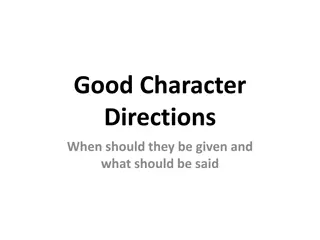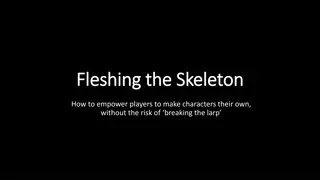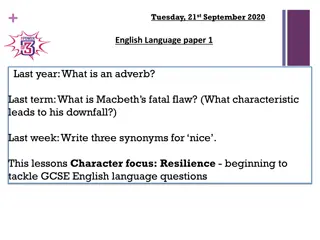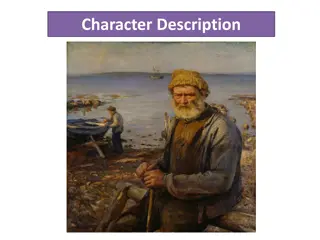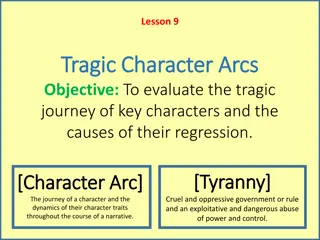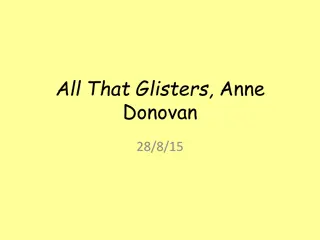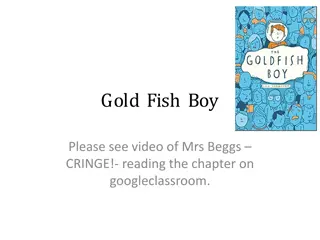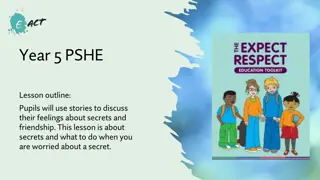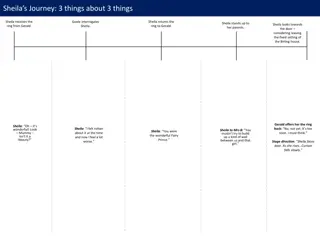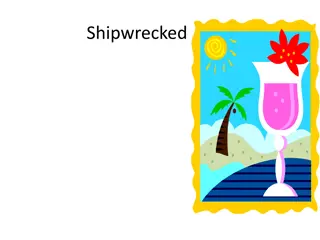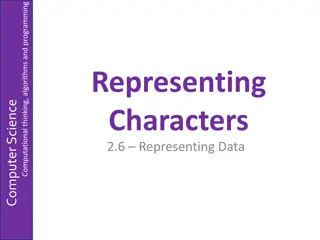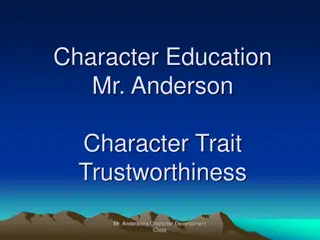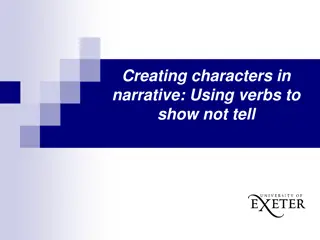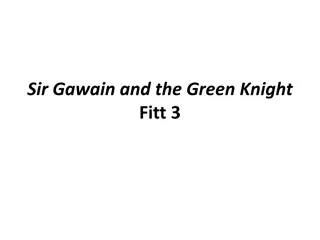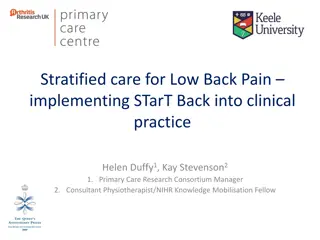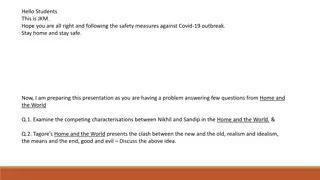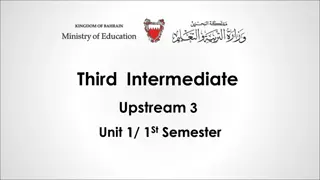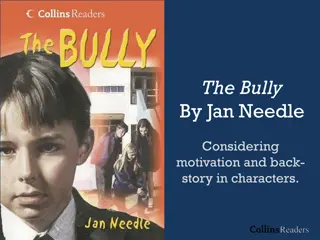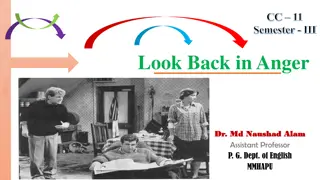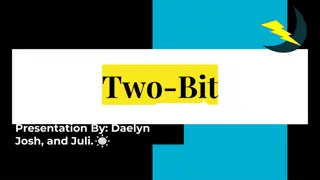Exploring Character Analysis and Novel Structure in 'Inside Out & Back Again' Lesson 2
Delve into character analysis of Ha in the novel "Inside Out & Back Again," focusing on making inferences, citing evidence, and using context clues to understand the character deeply. Engage in discussions and activities to uncover the complexities of Ha's personality. Analyze the unique text structure of the novel through diary entries written in free verse poetry, enhancing your comprehension and appreciation of the story.
Download Presentation

Please find below an Image/Link to download the presentation.
The content on the website is provided AS IS for your information and personal use only. It may not be sold, licensed, or shared on other websites without obtaining consent from the author. Download presentation by click this link. If you encounter any issues during the download, it is possible that the publisher has removed the file from their server.
E N D
Presentation Transcript
Review Learning Targets Lesson 2 Learning Targets: I can: Make inferences to deepen my understanding of Inside Out & Back Again. Inferences-determining meaning based on things not directly stated in the text. Cite evidence from the novel to explain how incidents reveal aspects of Ha s character. Use context clues to figure out word meanings. Participate in discussions about the text with a partner, small group, and the whole class. Lesson Two Launching the Novel: Character Analysis of Ha
A. Engaging the Reader: Orienting to the Novels Text Structure No one would believe me, but at times I would prefer wartime in Saigon over peacetime in Alabama. Pg.195 Based on what you saw and read in Lesson One, what do you think might have to happen to a little girl to make her say that she would prefer war at home in Saigon (Vietnam) to peace in Alabama? Lesson Two Launching the Novel: Character Analysis of Ha
A. Engaging the Reader: Orienting to the Novels Text Structure Browse through the pages of the novel and consider these questions one at a time. What do you notice about how this novel is written? How is it like other novels you have read? How is it different? Lesson Two Launching the Novel: Character Analysis of Ha
A. Engaging the Reader: Orienting to the Novels Text Structure So, what did we notice? Diary entries (dated) Written in free verse poetry ~no regular rhythm or rhyming pattern ~looks like a poem with stanzas Lesson Two Launching the Novel: Character Analysis of Ha
2. Work Time A. Introduce Things Close Readers Do Using 1975: Year of the Cat We will keep notes and use these notes throughout the Unit. All assessments for this Unit will be open notes so be sure to take complete notes. Start a new page/side for this chart. Things Close Readers Do (we will keep adding items to this chart, so it should be on its own page.) Get the gist - figure out what the text is mostly about. Lesson Two Launching the Novel: Character Analysis of Ha
2. Work Time A. Introduce Things Close Readers Do Using 1975: Year of the Cat Read along silently as I read aloud. Listen for the gist of the poem. What is the gist of this poem (your sense of what it is mostly about)? What do you notice about the language the author is using? What details really strike you as you read this poem? Why? (1 s share) Lesson Two Launching the Novel: Character Analysis of Ha
2. Work Time A. Introduce Things Close Readers Do Using 1975: Year of the Cat Your Turn: Re-read this poem independently and silently. Think about: What have you learned about Ha in this very first poem? What details did you notice in the text that help you learn about Ha. Lesson Two Launching the Novel: Character Analysis of Ha
Academic Vocabulary Reminder Inference- Take something from the text and combine it with something you already know in order to figure something out. Lesson Two Launching the Novel: Character Analysis of Ha
Who is Ha? Detail/Evidence Information about Ha Page Inference/Reasoning What this shows about Ha s interests, traits, values, or beliefs Lesson Two Launching the Novel: Character Analysis of Ha
2. Work Time B. Answering Text-Dependent Questions: 1975: Year of the Cat (10 minutes) 1. Tet is a special day. When is Tet, and what two events are celebrated on Tet? 2. How does the family celebrate Tet? 3. How does this special day affect the other days? 4. What does Ha do that might bring bad luck? 5. What can you infer about the narrator based on this action ? Lesson Two Launching the Novel: Character Analysis of Ha
Reread 1975: Year of the Cat, add to notes, and read pages 4 9 for gist Re-read 1975: Year of the Cat. Add at least three more details to your notes that helped you learn about Ha. Read pages 4-9 for the gist Homework: Continue reading your independent reading book. Fill out Blue Sheet for Week #4 Lesson Two Launching the Novel: Character Analysis of Ha
3. Closing and Assessment A. Debrief: Adding to Our Things Close Readers Do Anchor Chart Add to your anchor chart Things Close Readers Do Re-read Cite evidence How did you do with today s learning targets? Lesson Two Launching the Novel: Character Analysis of Ha
1. Opening B. Review Learning Targets I can: Make inferences to deepen my understanding of Inside Out & Back Again. Inferences-determining meaning based on things not directly stated in the text. Cite evidence from the novel to explain how incidents reveal aspects of Ha s character. Use context clues to figure out word meanings. Participate in discussions about the text with a partner, small group, and the whole class. Lesson 3 Learning Targets: Lesson Three Inferring about Character
A. Engaging the Reader: The Gist Mix and Mingle Scan pages 4-9 to refresh your thinking of the GIST Mix and Mingle Find another student Share the GIST of the reading with your partner for 2 minutes Lesson Three Inferring about Character
A. Engaging the Reader: The Gist Mix and Mingle Was your idea of the gist the same as your partner s? Did you remember something else as you shared and listened? Lesson Three Inferring about Character
Lesson Three Inferring about Character
2. Inside Out Text-Dependent Questions 1. How do the events in this poem connect to the first poem we read, 1975: Year of the Cat, and the title of the novel, Inside Out & Back Again? Lesson Three Inferring about Character
2. Inside Out Text-Dependent Questions 1. How do the events in this poem connect to the first poem we read, 1975: Year of the Cat, and the title of the novel, Inside Out & Back Again? Reminder: Predict on page 4 Prefix pre means before and dict means to say or declare Parallel with foretell on Page 1 Lesson Three Inferring about Character
2. Inside Out Text-Dependent Questions 2. What does the fortune-teller foretell about the family s future? Lesson Three Inferring about Character
2. Inside Out Text-Dependent Questions 3. Ha lives in a war-torn country. How does she hope her life will be turned inside out? Lesson Three Inferring about Character
2. Inside Out Text-Dependent Questions 4. Ha knows that inside out probably means something different. What will probably happen? Lesson Three Inferring about Character
B. Guided Practice-Quick Write In order to keep track of thinking, or think more carefully about specific sections of text, we will complete a QuickWrite. A short piece of written analysis about text. QuickWrite Chart
QuickWrite Chart Have I answered the prompt completely? Is the evidence I provided relevant and complete? Does my paragraph include the following? A focus statement At least three pieces of specific evidence from the text For each piece of evidence, an analysis or explanation: what does this evidence mean? A concluding sentence
QuickWrite Details Well constructed paragraph including all sentences required from chart. Anytime you do a QuickWrite, you will be able to use the novel, graphic organizers, notes, to help you. Quickwrite Model
QuickWrite Model Based on what you have read so far in the novel, what can you infer about what will happen to Ha and her family? Be sure to use details from the text to support your answer.
QuickWrite #1 Reread page 4-9 of Inside Out & Back Again What kind of person is Ha? Use specific evidence from the text to write a paragraph in which you discuss one of Ha s personality traits. You may use your text and the notes you collected in your journal or note-catchers to help you write this paragraph. A complete paragraph will meet all the criteria listed on the QuickWrite Chart.
Things Close Readers Do Get the Gist-figure out the meaning of the text Reread, Reread Cite evidence Use details from the text to make inferences Use context clues to figure out word meanings Talk with others about text
Lesson 4 Read the first stanza on page 8 of the poem, Papaya Tree. What is Ha referring to here? What images do you notice on the cover?
Cover of Book Based on your reading so far, what kind of tree can you infer this is? You took something from the text, and something you already knew and put it together.
1. Opening B. Review Learning Targets I can: Make inferences to deepen my understanding of Inside Out & Back Again. Inferences-determining meaning based on things not directly stated in the text. Cite evidence from the novel to explain how incidents reveal aspects of Ha s character. Explain how the specific word choices in Papaya Tree create tone and help reveal meaning. Participate in discussions about the text with a partner, small group, and the whole class. Lesson Four Lesson 4 Learning Targets: Considering a Character s Relationships with Others
Lesson 4 The critical incident in the novel we will discuss today is about Ha s papaya tree. The incident, or event, is critical (crucial or very important) because Ha pays attention to it a lot and writes about it several times. We need to infer about the meaning of the papaya tree. Critical in this context means important. In other contexts, it can mean negative. For example: A friend is being critical of you.
Lesson 4 Silently reread Papaya Tree on pages 8 and 9. You re reading for GIST. What is it mostly about?
Lesson 4 Now I will read it aloud for descriptive details. What new or important details struck you after hearing the poem read aloud?
Lesson 4 Did you notice these details? The seed is like a fish eye Slippery/shiny/black The size and color of the tree White blossom Twice as tall as I stand
Lesson 4 Descriptive details often help readers visualize what the writer is describing. We will be paying close attention to this type of language throughout the sudy of the novel and will often reread key passages to pay particular attention to word choice.


